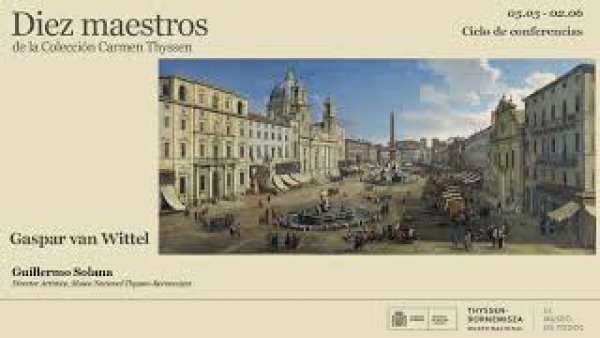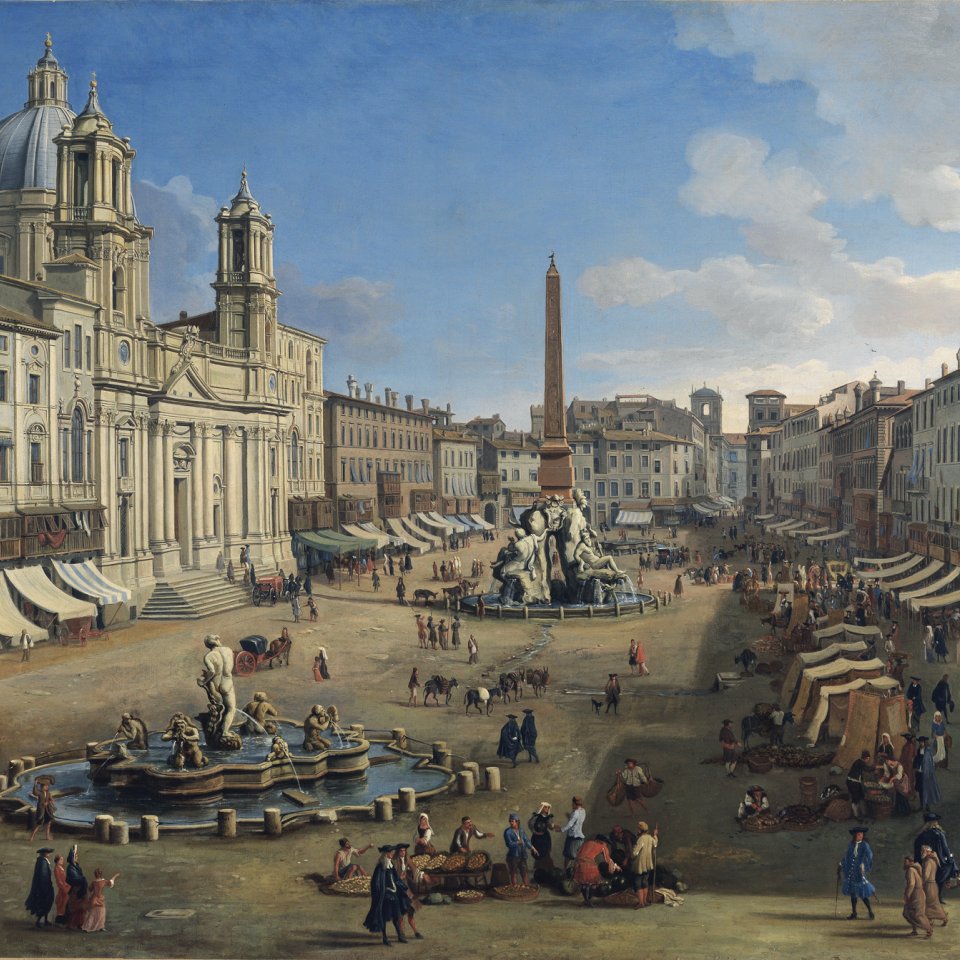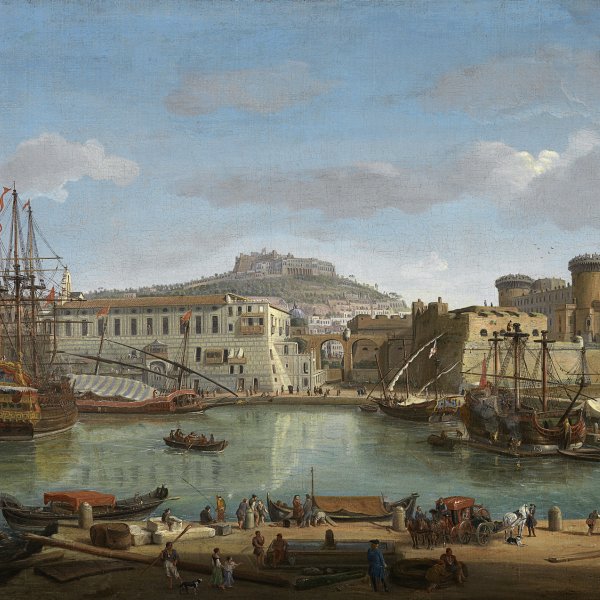Piazza Navona, Rome
Caspar van WitteI was one of the Northern European painters working in Rome in the late seventeenth and early eighteenth centuries. This view of the Piazza Navona gives particular prominence to three architectural projects involved in the remodelling of the square by Pope Innocent X: on the left, the reconstruction of the Pamphili family palace and the church of Sant’Agnese in Agone, completed by Borromini; and in the centre of the composition, facing the church, Bernini’s Four Rivers fountain. Van Wittel’s paintings provided a description of the modern city. His urban vistas reflected rational principles of perception and construction of perspective, characteristic features that are apparent in his many surviving preparatory drawings.
EA
Of the Dutch and Flemish view painters who worked in Rome for varying periods of time in the later 17th and early 18th centuries, Caspar van Wittel is the most prominent. His particular innovation was to focus attention on the modern city in a form of view that was to become known as the veduta, rather than to concentrate, as had his predecessors, on the remains of classical antiquity. Printmaking has been instrumental in this development, especially in regard to the panoramic depiction of urban sites.
Having trained in the workshop of Matthias Withoos in Amersfoort, van Wittel went to Rome where he is first recorded in 1675. He appears to have responded to the work of the Flemish printmaker, Lievin Cruyl, who published two sets of Roman views, totalling 50 plates, in 1667. He collaborated with the hydraulic engineer Cornelis Meyer, providing the models for three prints of Roman squares reproduced in one of Meyer's publications (1683 and 1685). Later, from 1680 onwards, van Wittel executed Roman views in tempera, most notably of city squares. His first known painting of the Piazza Navona is a tempera dated 1688 (Colonna Family Collection, Rome). Not only did van Wittel concentrate on the modern city, but he depicted its urban vistas in accordance with rational principles of vision and regular perspectival construction. This is to be seen in his various surviving large preparatory drawings which stress the orthogonals and a grid system to ensure regularity of proportion and recession. Such a preparatory drawing of the Piazza Navona (pen, brown ink and grey wash) which features a perspectival grid, is in the Biblioteca Nazionale, Rome. Van Wittel did not by any means work in isolation. A canvas by Antoon Goubau, painted in Antwerp in 1680 (Koninklijk Museum voor Schone Kunsten, Antwerp) depicts the Piazza Navona from a viewpoint markedly similar to that of van Wittel's composition. A near contemporary report mentions that van Wittel is said to have sent drawings from Rome to his former teacher, Matthias Withoos, and that these may have been in wider circulation in the Netherlands prior to the artist himself realising them in paint or print. Van Wittel's Piazza Navona was engraved by Gommarus Wouters and published in Rome as early as 1693.
The text accompanying Wouters' print mentions both the antiquarian significance of the square (which follows the form of Domitian's Circus Agonalis, on the site of which it stands) and its remodelling by Pope Innocent X Pamphilij (d. 1655), who had made the square the centre of his artistic patronage, thereby transforming it. Van Wittel's choice of vantage point gives special prominence to Innocent's three major building projects; the reconstruction of the Pamphilij family palace by Girolamo Rainaldi (the building on the left); the rebuilding of the church of Sant'Agnese in Agone, completed by Francesco Borromini (left centre) and Gianlorenzo Bernini's Four Rivers fountain standing centrally before it and surmounted by an obelisk.
Wouters'print may have had the effect of advertising the subject, helping to encourage a desire for painted versions of it. The present canvas is by far the largest known. It is dated 1699, the year in which van Wittel is said to have gone to Naples at the invitation of the Spanish viceroy, the Duke of Medinaceli, for two years. The inclusion of "ROMA" before the date suggests that it was painted before his departure. He subsequently painted two smaller versions dated 1715 (Chinni Collection, Rome) and 1720 (Private Collection, Milan).
Even though the work of Dutch and Flemish "vedute" painters emerged from their landscape tradition, and that of their Italian contemporaries and successors was deeply informed by the practice of theatrical set design, the fact that a canvas by Canaletto almost exactly reproduces Wouters' print after van Wittel's Piazza Navona composition (last recorded with Sir Arundell Neave, Wexford, Ireland) suggests that the great Venetian studied and adapted the work of his Dutch predecessor.
Ivan Gaskell













